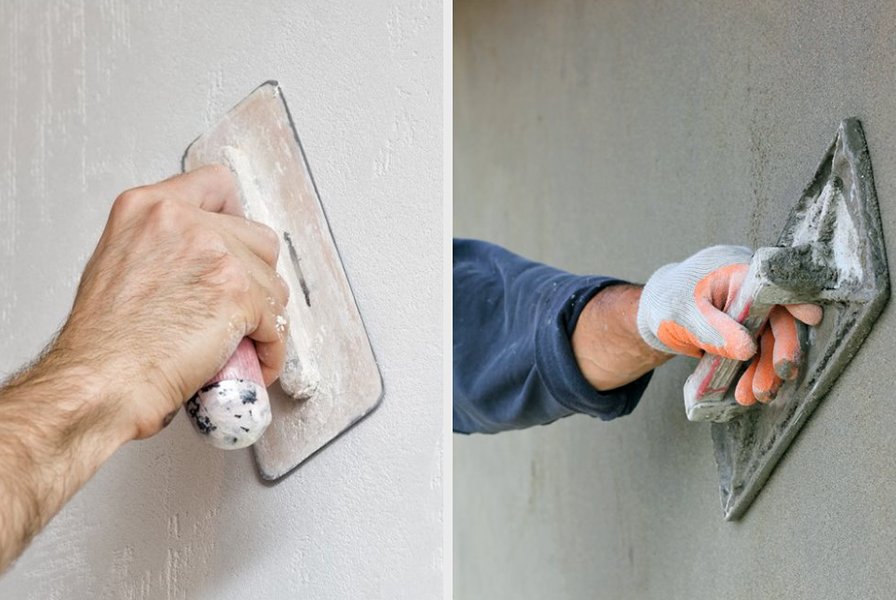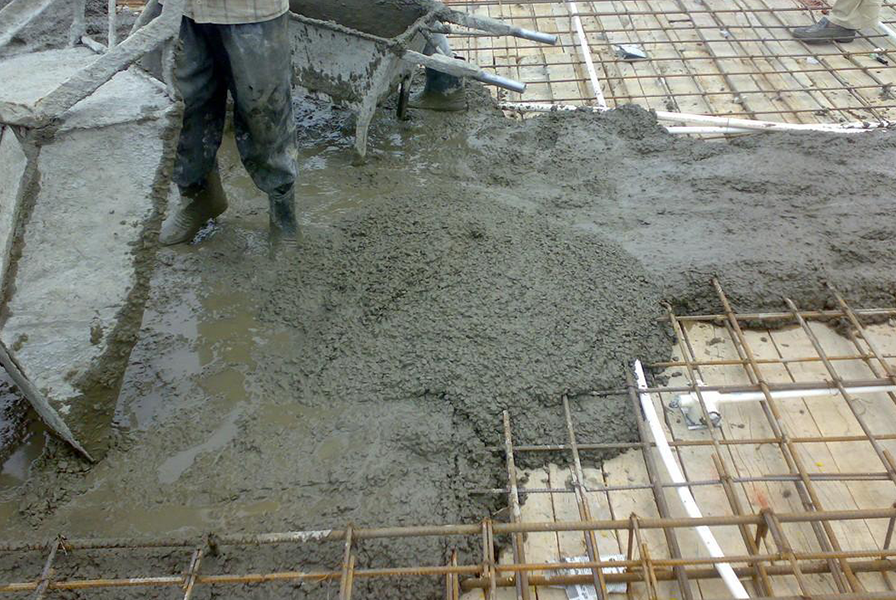
Plastering is associate ancient building technique to cover the exposed surface and provides protecting surface against penetration of rain, alternative atmospheric agencies like vermin and improves the looks of the structure and provides decorative effects.
Cement Plaster:
- Cement plaster is a homogeneous mixture of Portland cement and sand with water. The sand and cement are mixed at the site in different ratios.
- It is used on both internal as well as external surfaces.
- The thickness of cement plaster should not be less than 10 mm. The Thickness of cement plaster may vary and it depends on the surfaces to be covered and its plumb and texture.
- It has more or less same thermal conductivity as gypsum.
- Cement plaster is basically weak in tension and flexural strength and hence prone to cracking. Most of cracking happens due to shrinkage, which is quite common.
- Cement plaster is not 100 % permeable to water vapor. In the bathroom or in the kitchen it will lead to the formation of condensation on the walls and as consequences mould, fungi will develop and also floor will become slippery due to moisture.
- Pre-Curing and Post-Curing are necessary for cement sand plaster.
- Cement plaster needs an enormous amount of water during its curing period. The site becomes dirty due to it and also needs more time for works.
- Cement plaster up to 200 to 300 C acts as refractory material and resists fire but later it becomes brittle and cracks and falls and loses bond with wall.
- It has more or less same acoustics properties.
- It cannot be applied on the smooth surface.
- Cement plaster is not a rust inhibitor.
- The mixture of the sand and cement is to be done on site in different ratios.
- After sand cement plaster, POP punning is required for the better and leveled surface finish.
- The space looks smaller and unattractive as it is dark grey in color.
- Development of shrinkage cracks is quite frequent in cement plaster.
- Density of cement plaster is higher than gypsum plaster; hence the load on the building is increased as compared to gypsum plaster and needs water to attain strength.
- Cement plaster is comparative gives a rough finish.
- Minimum 24hr. of interval between coats of interior Portland cement plaster. After a 48-hours period finished coat plaster may be applied to interior cement base coats.
- Percentage of wastage is higher during application.
- The application of cement plaster is time-consuming process hence increases the project cost.
- However, per square feet cost of cement plaster is less than gypsum plaster due to higher cost of gypsum.
Gypsum Plaster:
- In gypsum plaster, gypsum is used as a binding material instead of Portland cement. It does not need sand and is ready to use.
- Can be used only in internal walls and ceilings. And it cannot be used in wet areas like a toilet, bath, kitchen, wash area, etc.
- The thickness of undercoat of gypsum plasters are generally 11 mm thick for walls and 8 mm thick for ceiling and finish coat plaster is 2 mm thick.
- Gypsum plaster has low thermal conductivity and good thermal properties and ensures energy and power saving.
- Gypsum plasters exhibit high tensile and flexural strength. They are less prone to cracking.
- Gypsum plaster is not affected by insects and does not nourish mould growth of fungal. They pose no health hazards and are therefore frequently specified in hospitals and clinics.
- Gypsum plaster requires no water curing and should be permitted to dry out as quickly as possible. Gypsum plaster requires no curing which saves up on all that water.
- Gypsum is non-combustible and contains a high content of crystal water. In the event of a fire, it acts as a barrier and will protect the block work, concrete and steel.
- Gypsum as a binder is used in the manufacture of acoustic tiles and plasters, a contributory factor to the absorption of air borne sounds.
- Due to the nature and structure of gypsum, it exhibits excellent bonding properties hence is applied in a single coat on RCC ceilings, internal bare-brick walls, AAC blocks and concrete columns.
- It can be applied on smooth as well rough surfaces.
- Gypsum Plaster is the perfect rust preventive agent and also inhibits corrosion of electric metal fittings, pipes etc. Metal lathing embedded in gypsum plaster will not corrode or rust and serves durable and long life.
- Gypsum plaster is pre-mixed and available in easy to handle bags. Only addition of water is required. A single coat application is resulting in less wastage of time, labour and material.
- Gypsum plaster provides a smooth interior finish for ceiling, walls and is ideal back ground for good quality paints and wallpaper finishes.
- The room space looks large and beautiful as gypsum plaster is pure white in color.
- Gypsum plasters do not shrink like cement during the drying out and hardening process.
- Gypsum plaster is light in weight and total strength is achieved in air.
- Gypsum plaster is easily workable for excellent finish. It gives smooth finish compatible to receive all type of paints. Various surface textures and surface hardness can be obtained.
- Setting time of gypsum plaster can be controlled. Time between two successive coats is very small.
- Percentage of wastage is nominal during application.
- The application of gypsum plaster is time saving process, thus decreases the project cost.
- Gypsum plaster is costlier than cement plaster for same thickness.
Gypsum plaster is advisable when compared to cement plaster as it gives better-desired finish and performance. Gypsum plaster is also advisable where river sand/natural sand is not easily available for the construction. Good quality gypsum is not available everywhere and hence costly.
Write your comments






